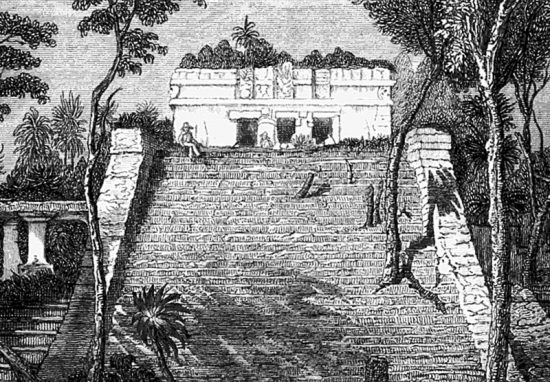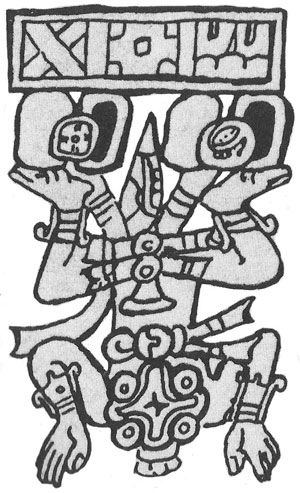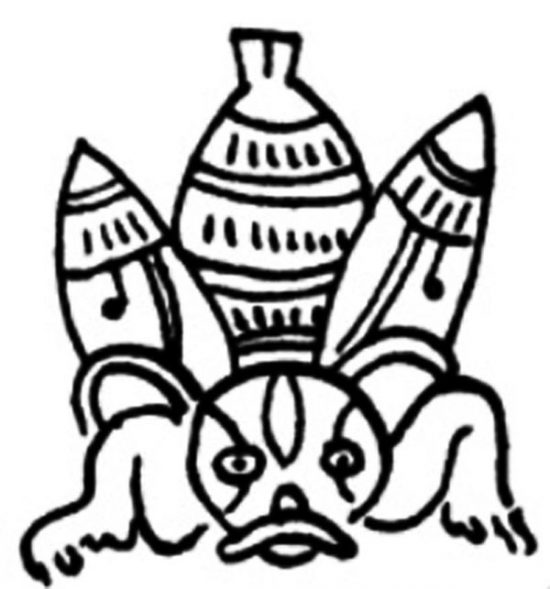Have you ever heard of the Nephites or Lamanites? If you are a Mormon, you have. If you are not a Mormon, you probably know them by their real name, the Maya. Here is the story of how the names became linked:
In 1841, an American adventurer named John Lloyd Stephens and a British artist named Frederick Catherwood stayed at the ruins of Tulum for over a week during their tour of Yucatán. Although the pair found the ruins covered in vines and trees, they also discovered signs of recent rituals and offerings left behind by the Maya in one of the buildings. Stephens later wrote a book about the trip, Incidents of Travel in Yucatán, and published it in 1843. Engravings of drawings made by Catherwood at Tulum were included in the book. It was a run-away best-seller.
A copy of Stephens very popular book was sent by a Mormon named John Bernhisel to the Latter Day Saint (LDS) Prophet Joseph Smith, who wrote a review of it. Mentions of this review appeared in the September 15, and the October 1, 1842 volumes of the official LDS publication Times and Seasons. In the publication, Smith wrote of Stephens’ book: “Of all the histories that have been written pertaining to the antiquities of this country it is the most correct, luminous and comprehensive, and it supports the testimony of the Book of Mormon.”

As Smith studied Incidents of Travel in Yucatán more and more, he began to read into it the proof he was looking for; namely that Jesus Christ (embodied as the Postclassic Maya god Kukulcán) once lived in Yucatán. Smith spoke often of Stevens’ book (and of his earlier book, Incidents of Travel in Central America, Chiapas, and Yucatán) to other LDS members, who also were captivated by it. In 1849, five years after Smith was killed by a mob as he awaited trial in a Carthage, Illinois jail on charges of riot and treason, LDS leader Orson Pratt wrote another review of the book in the Millennial Star. “…the Book of Mormon gives us the names and locations of great numbers of cities in the very region where Catherwood and Stephens afterwards discovered them. The Book of Mormon says that in the 367th day after Christ, the Lamanites, the forefathers of the American Indians, took possession of the city of Desolation, which was in Central America, near to or in Yucatán… the Nephites being the nation who inhabited the cities of Yucatán.” The LDS church over the next century fielded several expeditions to Yucatán searching for ruins that would match “The city Bountiful of the Book of Mormon,” a site they described as “…an important walled city and military center of the first century B. C. and the place of the resurrected Christ appeared to the surviving Nephites following the cataclysm incident to his crucifixion, a location of key importance in the Book of Mormon geography.”
The Mormons’ search for proof of a link between the mythological Nephite walled city and the Maya site of Tulum has led to the establishment of a cottage industry dedicated to promoting this connection on websites and printed pamphlets. On many of these websites you can book tours to Tulum (and other Maya sites) where the Mormon guide will point out the “evidence” that shows the Maya were actually the Nephite people of the Book of Mormon.
One such piece of evidence these Mormon guides often point out are the three niches that adorn the façade of the room atop El Castillo in Tulum. The central niche holds a plaster representation of the Descending God (sometimes incorrectly called the Diving God), a late Postclassic aspect of the god Kukulcán embodied as the planet Venus. He is shown here in the “descending” aspect that the Maya employed to illustrate his “coming down from heaven,” the time of the year that Venus first appears as the morning star. This Tulum version of Descending God is identical to other late Postclassic depictions of the god found in Mayapán, Coba, and Sayil. 1930s Archaeologist Ralph Roys had his own opinion, which associates this plaster image with Muzen Cab, the Bee God, based mainly on the similarity between the depictions of Xux ek (Wasp Star) and Muzen Cab (Bee God).


Many guides and books now repeat Roy’s 1930s theory as gospel. However, Bishop Landa recorded in his 1566 book, Relaciónes de las cosas de Yucatán, that the Maya believed that after Kukulkán established Mayapán, he returned to his own land and then “went up to heaven as a god and became the planet Venus.” Previously, the Classic Period Maya god we now call “God I” (called Tzontemoc by the Aztecs) was the one associated with Venus, but he was replaced by the Postclassic Maya with this new feathered-serpent god, Kukulkán, especially in the Itzá cities of Chichen Itzá, Tulum, Coba, and Mayapán.
In Mayapán, there is a wall connected to Kukulkán’s temple that bears a series of murals depicting two men carrying banners, flanking an image of the “Descending God.” More images of this “Descending God” as Xux Ek appear in the Dresden Codex, where the head of the god is drawn as “ek,” the glyph for “star.” Further, when one considers that the Maya festival of Chic Kaban, honoring Kukulkán, was celebrated on the first appearance of Venus and the fact that El Castillo in Tulum was built to contain alignment elements that coincide with this celestial event, identifying the Descending God with Kukulkán is much more reasonable than connecting him with the Maya Bee God, simply because the two depictions have wings.
Mormon tour guides, however, believe this plaster image is actually a representation of Jesus Christ when he was supposed to have visited the New World after his resurrection. They also tell the tourists in their tour that the northern niche holds an image of God the Father and, since there is nothing left in the empty southern niche, they say it represents the invisible Holy Ghost.
The guides to these tours closely toe the Mormon line as far relating the history of Tulum so that it dovetails with Mormon mythology. One of the more grievous examples of the twisting of the true history of the site to fit LDS theology is the Mormon claim that Tulum was an important, thriving walled city 367 days after the crucifixion of Jesus, which has been customarily dated to around 2,000 years ago. Archaeological evidence proves that Tulum was not in existence as a city and the wall was not built until around 1200 AD. Another falsehood that is touted by the LDS guides is that their prophet Joseph Smith wrote that the name of the walled city of the Nephites was called Zama, the name of Tulum in Postclassic Mayan. In reality, that claim only exists on websites and popular LDS books and never appeared in any Mormon-related publication until the late twentieth-century. Smith himself never penned the name Zama at any point in his life.
The LDS guides will also claim that the image of “the descending god” can only be found in Tulum. In truth, the image appears at many Yucatecan Maya Postclassic sites, such as Coba, Sayil, and Mayapán, as well as the Dresden Codex.
Many other such garbled interpretations of the history of Yucatán are made by the LDS guides to make it conform to the Book of Mormon, but the truth is, Tulum was simply a Postclassic Maya city and had nothing to do with the mythological Nephites or Lamanites.
Copyright 2017, Ric Hajovsky
